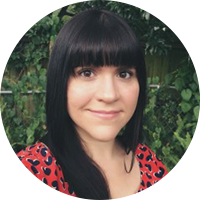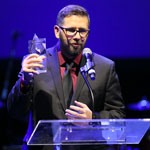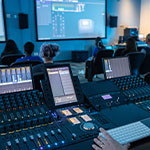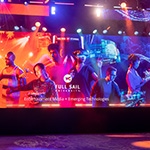Full Sail Stories
Published Mar 01, 2018
Legendary Engineer and Audio Mixer Bob Clearmountain Visits Campus
Over the last 40 years, Bob has worked with artists like Bruce Springsteen, The Rolling Stones, David Bowie, and Bryan Adams.
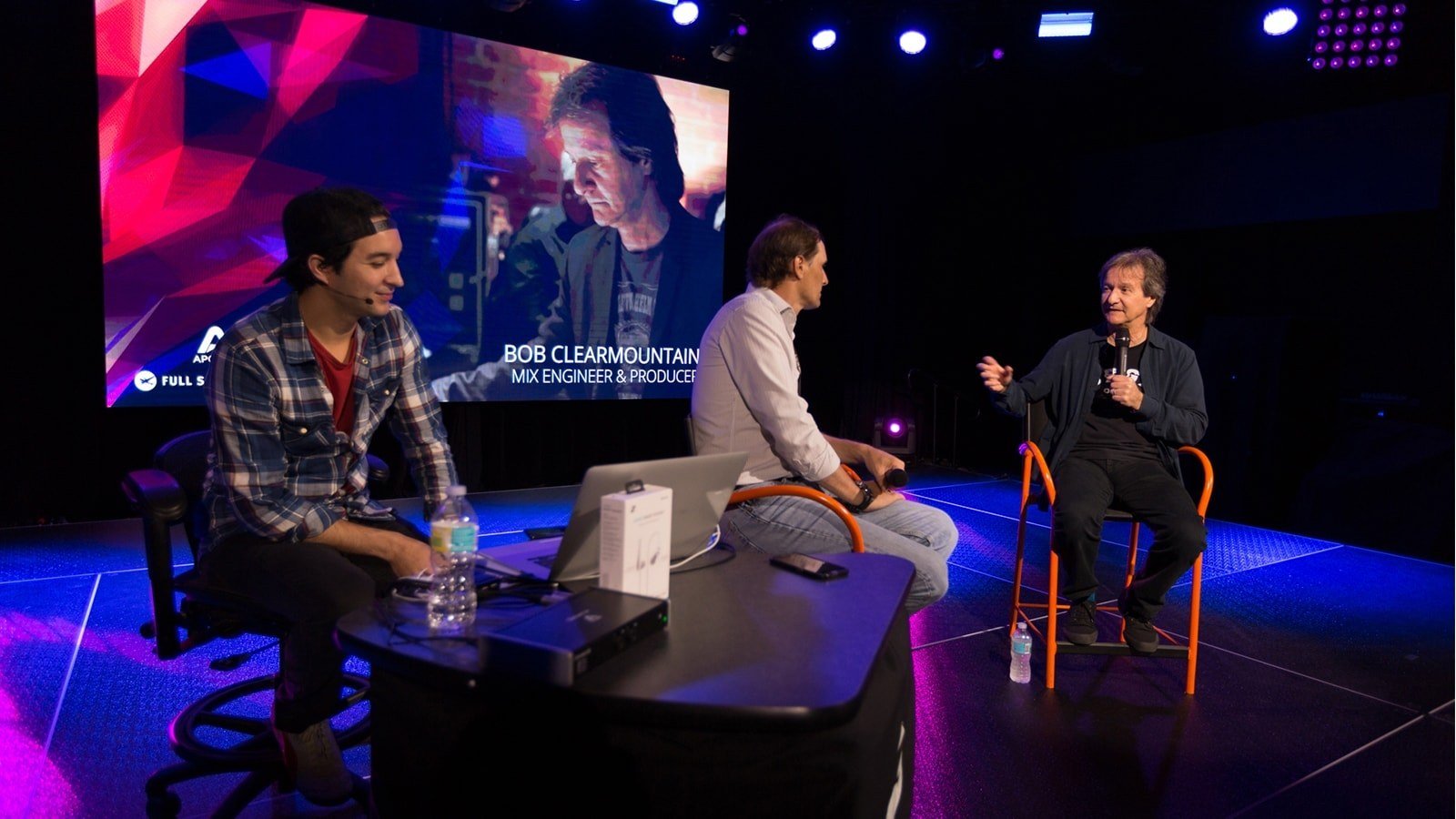
Before legendary engineer and audio mixer Bob Clearmountain took the stage at Full Sail’s Live 2 venue, course director Darren Schneider asked a few aspiring engineers to come to the front of the room for a demonstration. Earlier, he’d printed out Bob’s list of credits and taped the pieces of paper together to form a scroll, which he invited the student volunteers to unroll. It stretched over 22 feet.
Over the next two hours, Bob and Darren spoke about the craft of audio production and reminisced about key points in Bob’s career. Here are some highlights from that conversation.
On Breaking Into the Industry
Bob began his career by accident. His high school band was recording a demo at Media Sound Studio in New York, but they broke up halfway through recording. Bob, however, stayed on at the studio as a runner. On his first day on the job, he got pulled into a session to cover for an assistant engineer.
“The session was for Duke Ellington,” said Bob. “The Duke was yelling at the trumpet player. I was so naïve; I didn’t know famous people swore.”
From that first session, Bob was able to work on more projects as an assistant. He was in charge of setting up sessions for the engineers before bringing in talent. The gig also provided him with unparalleled access to equipment and an environment primed for experimentation.
“Me and some of the other guys in the studio formed a studio workshop where we would go in on the weekends and try every mic on every instrument,” he recalled. “I was thinking about that during my tour of Full Sail’s campus. I saw how hands-on Full Sail is, which is the most important thing when you’re starting out.”
On Settling on a Specialty
When Bob first began his career, the recording process was completely analog, meaning you needed multiple people to changes settings on the console during the mix process. Because mixing was so reliant on other people, Bob turned to tracking as his main focus.
“I liked working with musicians, and it was exciting to hear a record come together,” he said. “But as technology progressed and automation became standard, tracking lost some of its appeal. Vocals, drums – those are interesting if you’re a producer. So I became a producer. And after about 25 records I realized I hated it. I didn’t like trying to get performances out of people. And I was always the guy who was trying to hand out rough mixes at the end of the session. And I thought I could be more creative as a mix engineer.”
On Building Trust with Artists
Over the course of 40 years in the industry, Bob has had a ton of repeat customers (for instance, he’s worked on every Bryan Adams album since 1984). What’s the secret to building lasting relationships with award-winning artists? Not interjecting too much of yourself in the mix, for starters.
“That’s one of the reasons I wasn’t a good producer,” he joked. “Because I would come in and immediately ask the artists what they wanted to do.”
On Drawing Focus in a Mix
The conversation culminated with Darren playing a clip from Bryan Adams’ hit song “Summer of ’69,” which Bob mixed. The song begins rather sparsely, then builds to a full, anthemic sound.
“This is an example where all the instruments were all in from the beginning of the first verse, and they went all the way through. But sometimes, if you take out a keyboard or an extra guitar to draw focus. Suddenly, you get the song and you’re more focused on the lyric. You can create a focus by leaving something out. So now that the listener is familiar with the melody, and in the second verse you can start bringing those elements back in,” explained Bob.
On Process
Bob says there’s one misconception he often runs into when talking about his work.
I’ve done a number of interviews over the years, and the question is always, ‘How do you build a mix?’ When I think about building, I think about building a house. You start with a foundation and build it from there,” he says. “I don’t do that. I start with everything a make a rough mix. I might make the vocals louder to focus on that, or work on EQing the voice just to guide the rest of it. Pop and rock records are mostly based around vocals. A better analogy is thinking about the individual components of a song as actors in a play. Where does this one come out? It’s more a visual thing to me. And ultimately, I don’t build the mix, I just mix.”
